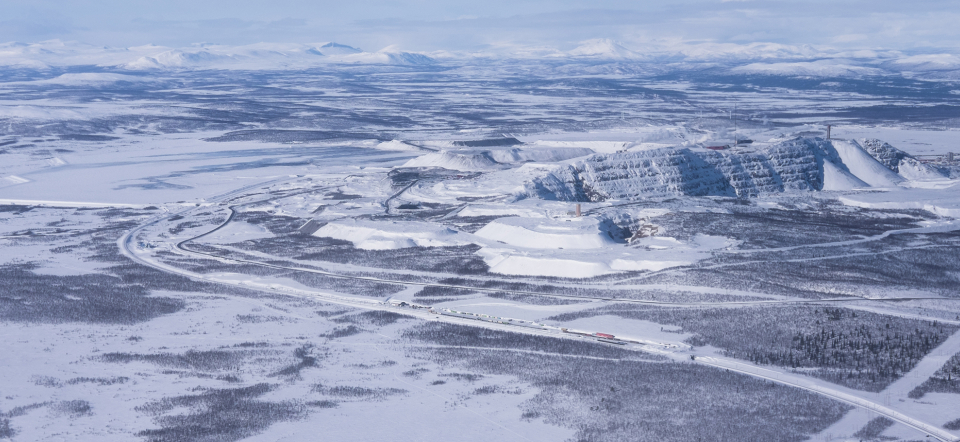Few places illustrate this as sharply as the Arctic. Beneath the melting ice and tundra lie vast deposits of critical minerals. But mining in the high north risks disrupting ecosystems and displacing communities that have lived there for centuries.
“It is a kind of paradox,” says Research Professor Davor Vidas from the Fridtjof Nansen Institute in Norway. “You have the Paris Agreement with the goal of green transition. To achieve that, you need a large number of minerals – but most processing is done in China. So how do you reduce this dependence without creating new problems?”
He is one of the partners in a new research project that will examine how the Nordic countries can respond to the global race for critical minerals in the Arctic. The project Critical minerals in the Arctic (CRIMINA) runs from 2025 to 2029 and brings together experts from five Nordic institutions.
“Because of the current economic, geopolitical and legal developments, is it very timely that we now are starting a project about critical minerals in the Arctic,” says Vidas.
“In the Arctic there are both important terrestrial deposits, like in Greenland, and there are also the possibilities of new ways of extracting resources, such as Norway's relatively recent decision to allow exploration for minerals on the seabed. The objective is really to put together the relevant knowledge – law, politics, economics, environmental impacts and human rights – and present this to stakeholders such as governments, industry and local and Indigenous populations.”

Local perspectives
Global warming is making Arctic resources more accessible, while the demand for critical minerals is skyrocketing due to the green transition. The Nordic countries are emerging as key potential suppliers, but mining projects raise serious questions about environmental sustainability and Indigenous rights.
Gørild Merethe Heggelund, project leader of CRIMINA and Research Professor at the Fridtjof Nansen Institute, explains:
“The question is how it is possible to have a sustainable exploitation or exploration of critical minerals in the Arctic without harming local and Indigenous populations.”
She pointed to the mining city of Kiruna in northern Sweden, where 12,000 people will be relocated due to subsidence from mining. “This is a very concrete example of what is at stake for local populations and Indigenous communities. In several such cases, there has been much criticism of both public and political institutions and the business community for not including these populations from the outset, but only involving them after important decisions have been made,” Heggelund says.
Geopolitics and China
The starting point for the project is sustainable development in the Arctic, but it will also have a significant geopolitical component, says Vidas:
“Geopolitics is very much present in this project. Because when we talk about critical minerals, we also have to talk about China. In a way, China is a starting point for the discussion about critical minerals in Europe and the world, because China is so dominant in the supply chains.”
China currently controls about 90 percent of global processing of rare earth elements. Heggelund underlines that China’s dominance is not only about geology, but also about long-term industrial policy:
“China also has all the technology and the capacity, which we don’t have. They have invested for decades, sometimes without immediate economic return. That is why it is so difficult for Europe to compete. This is the backdrop of what we want to study – how Nordic and European countries can respond to this dominance.”
From global strategies to local impacts
By looking at cases from Greenland to Kiruna, the researchers hope to provide decision-makers with concrete policy options. The project will publish academic articles, policy briefs and host annual workshops in different Nordic locations.
“As researchers, we want to act as a catalyst between stakeholders – governments, industry, Indigenous communities – to ensure that policies are informed by the broadest possible knowledge base,” Vidas says.
CRIMINA – Critical minerals in the Arctic
- Duration: 2025–2029
- Participants: 21 researchers from Fridtjof Nansen Institute (Norway), Geological Survey of Denmark and Greenland (GEUS), Swedish National China Centre (Sweden), NTNU/SINTEF Gemini Centre for Deep-Sea Mining (Norway), Arctic Centre, University of Lapland (Finland)
- Disciplines involved: Law, political science, sinology, geology, biology, toxicology, Indigenous studies, economics
- Focus areas: Terrestrial and seabed resources, Indigenous rights, environmental impacts, geopolitical and legal frameworks



